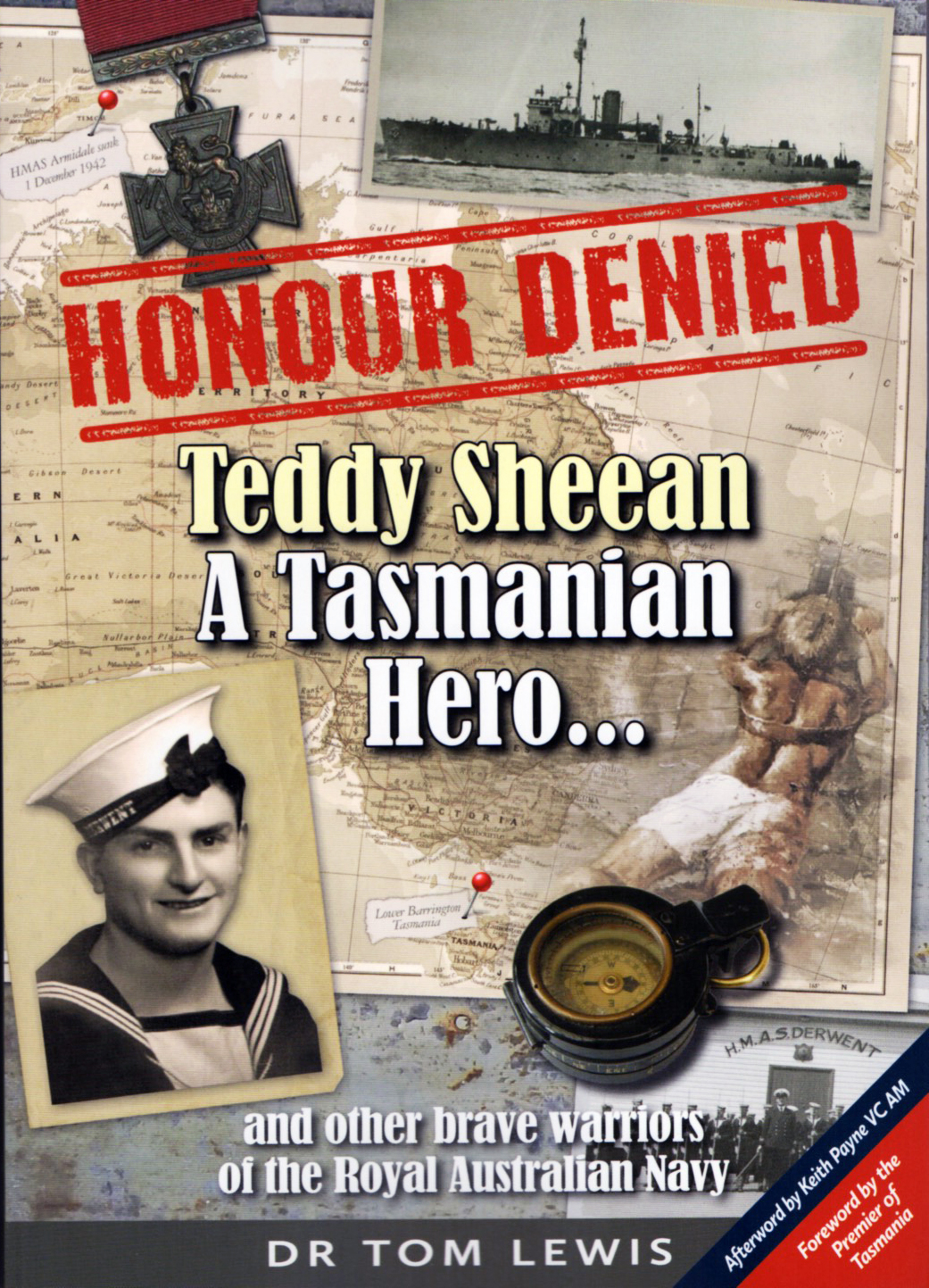Tom Lewis has painstakingly documented three outstanding acts of heroism by members of the Royal Australian Navy (RAN) during the Second World War. He examines the RAN culture before and during the War, the reasons and rationales given for failure to have the deeds of these men honoured appropriately.

Paperback 317pp RRP $24.95
The life of Teddy Sheean and his fifteen brothers and sisters is described from his birth, his enlistment and conditions in the RAN at the time. Chapters have been devoted to training, the development of warships, and their armaments, and an analysis of the capabilities of the Australia’s corvettes upon which Sheean saw action after HMAS Armidale departed Darwin in November 1942.
Ordinary Seeman Teddy Sheean was a loader on an Oerlikon anti-aircraft gun. After being struck by torpedoes delivered by Japanese dive bomber, the order was given to abandon ship. Sheean moved to leave then turned back and wounded from machine gun fire, strapped himself to the Oerlikon gun seat and continuing firing. The Armidale survivors witnessed him shooting down one of the strafing dive bombers before dying and going down with his ship. The saga continued for days after the sinking, with incredible delays before search efforts were launched. The action saw a ‘Mentioned in Despatches’ awarded to Lieutenant Whiting and posthumously to Sheehan.
Criticism has been levelled at the RAN for not doing more to recognise Sheean’s action. The Armidale’s commander was devastated at the loss of his ship, and there was little interest at the time in a battle loss. At the time the Royal Navy (RN) had decreed that the RAN could not nominate the award for any brave action, and as well all awards had to be approved by the British Admiralty before being passed on to the Sovereign. In Lewis’ mind, inaction by the Australian government at the time, and subsequently, is why there has never been a Victoria Cross awarded to a member of the RAN, despite similar deeds in like circumstances resulting in RN recipients of Victoria Crosses. ‘Valour in battle is the quality for which the Cross is awarded, and the lack of VCs has more to do with convoluted bureaucracy than a lack of bravery.’ (page 215)
Commanding the sloop HMAS Yarra escorting a convoy in March 1942, Lieutenant Commander Robert Rankin, when confronted by three Japanese cruisers and two destroyers, turned the Yarra towards them, making smoke so the convoy could escape. Rankin and almost all his officers were killed by an 8-inch shell hitting the bridge. HMAS Yarra sunk two hours later. There were no bravery awards for any crew for her last action. The circumstances were virtually the same for the HMS Jervis Bay in 1940, while her RN skipper was awarded the Victoria Cross for the action.
Reviewed for RUSI by Neville Taylor, May 2020
Contact Royal United Services Institute about this article.






